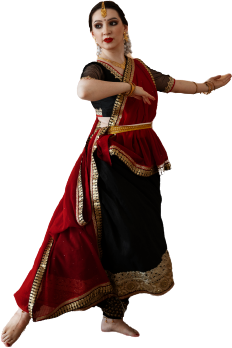Semi-Classical Dance Studio in Mohali and Chandigarh

The Semi-Classical course is grounded by:
- Intricate choreography
- Precision of movement (especially arm and head placements)
- Ability to hold and play with rhythms
- Building confidence in expressing oneself through movement
This course is great for beginners and intermediate dancers too – previous classical Indian dance training is not essential. By the end of this course, you’ll be able to perform semi classical dance very easily and comfortably.
Semi Classical dance has its origins in Indian classical and folk dance, which when put together, is called Semi-Classical dance form.
The steps and moves of semi-classical dance are not as complex or intricate as pure classical forms. However, the authenticity of the Indian dance form is preserved, and students are able to grasp these lighter semi-classical dances easily. Semi-classical dances are fun and fluid.
This type of dance breaks the stylized structures and forms of the classical dance, and adopts a more contemporary style. All along the ethos of the basic dance remains intact.
The Semi-Classical dance form at Step2Step Dance Studio will be taught using Bollywood film songs. For children who are interested in Semi-Classical dance form, the basics of Bharatanatyam will be taught first, as it helps build a stronger foundation as a dancer. When the student is ready, she will learn the Semi-Classical dances based on Bollywood film songs will be taught.
Semi-Classical dance classes are also offered to adults who will learn choreographed pieces of Bollywood songs which includes Classical and Semi-Classical dance styles.
Bharatanatyam
Kathakali
Kathak
Kathak is traditionally attributed to the traveling bards of ancient northern India, known as Kathakas or storytellers. The term Kathak is derived from the Vedic Sanskrit word Katha meaning “story”, and kathaka in Sanskrit means “he who tells a story”, or “to do with stories”. Kathak evolved during the Bhakti movement, particularly by incorporating childhood and amorous stories of Hindu god Krishna, as well as independently in the courts of north Indian kingdoms.
Kuchipudi
Kuchipudi classical dance originated in a village of Krishna district in modern era Indian state of Andhra Pradesh. It has roots in antiquity and developed as a religious art linked to traveling bards, temples and spiritual beliefs, like all major classical dances of India. In its history, the Kuchipudi dancers were all males, typically Brahmins, who would play the roles of men and women in the story after dressing appropriately.
